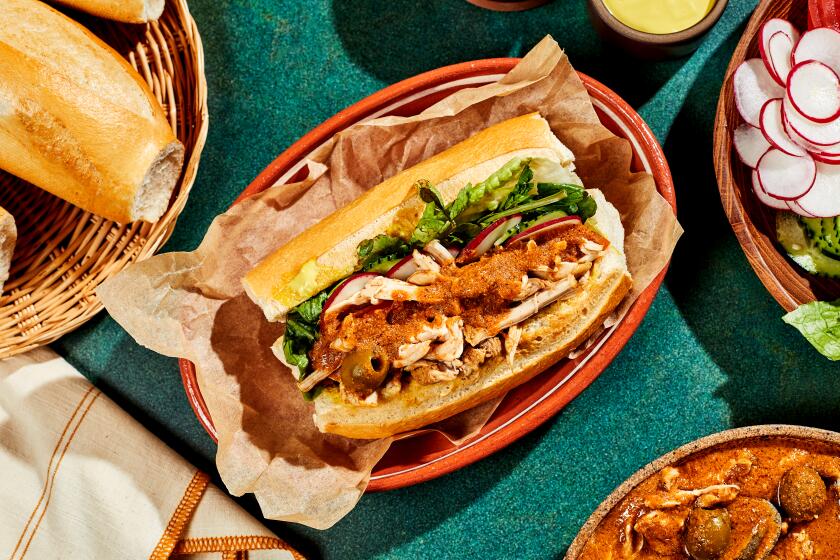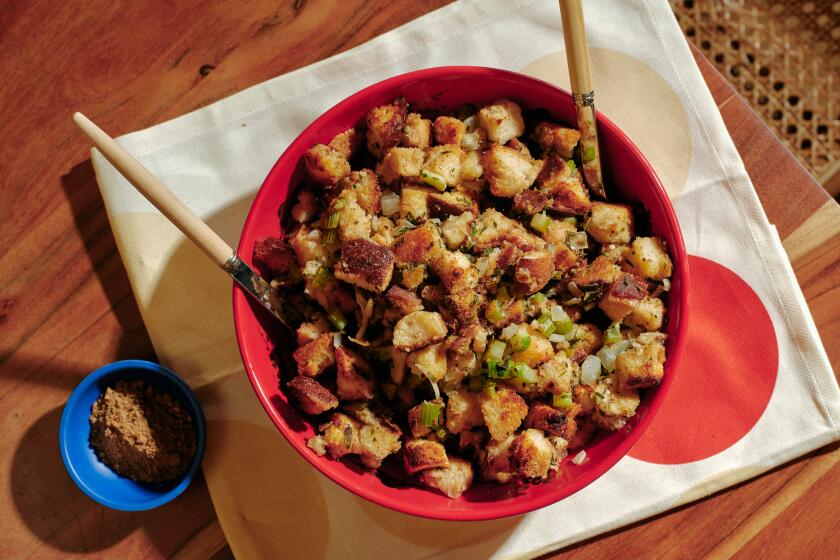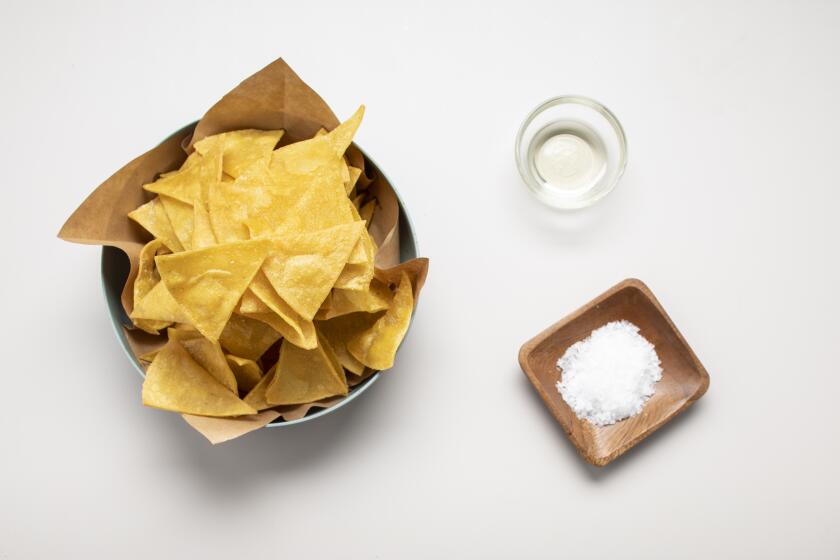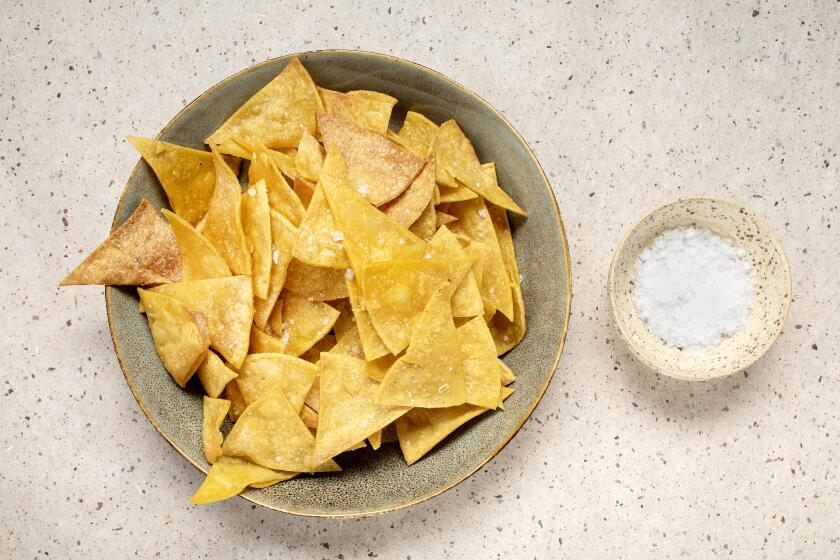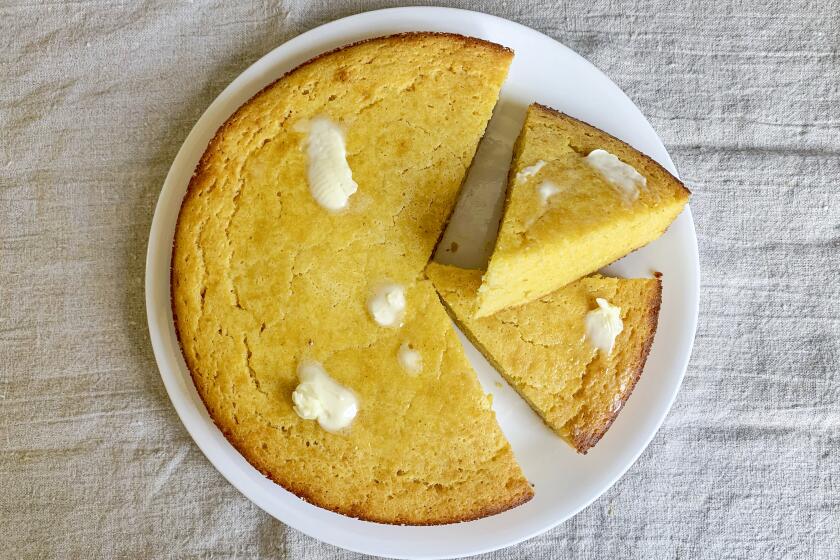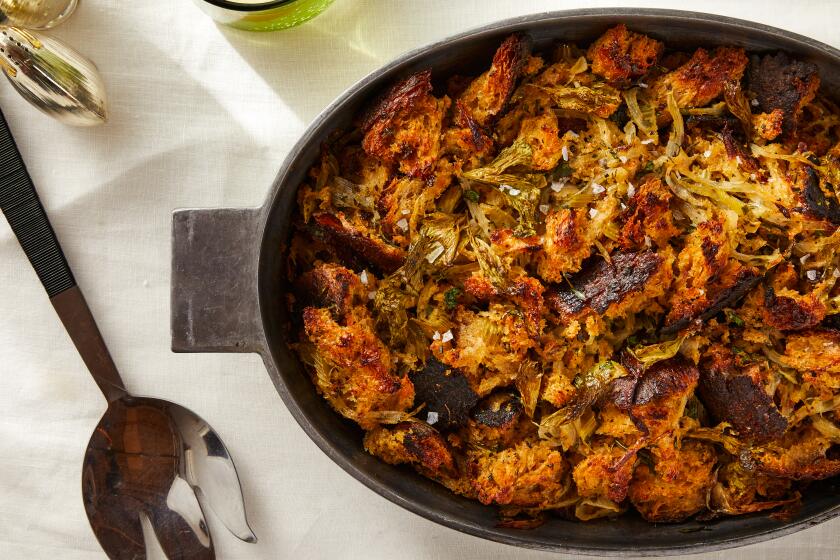Newsroom Cafe's blue corn bread
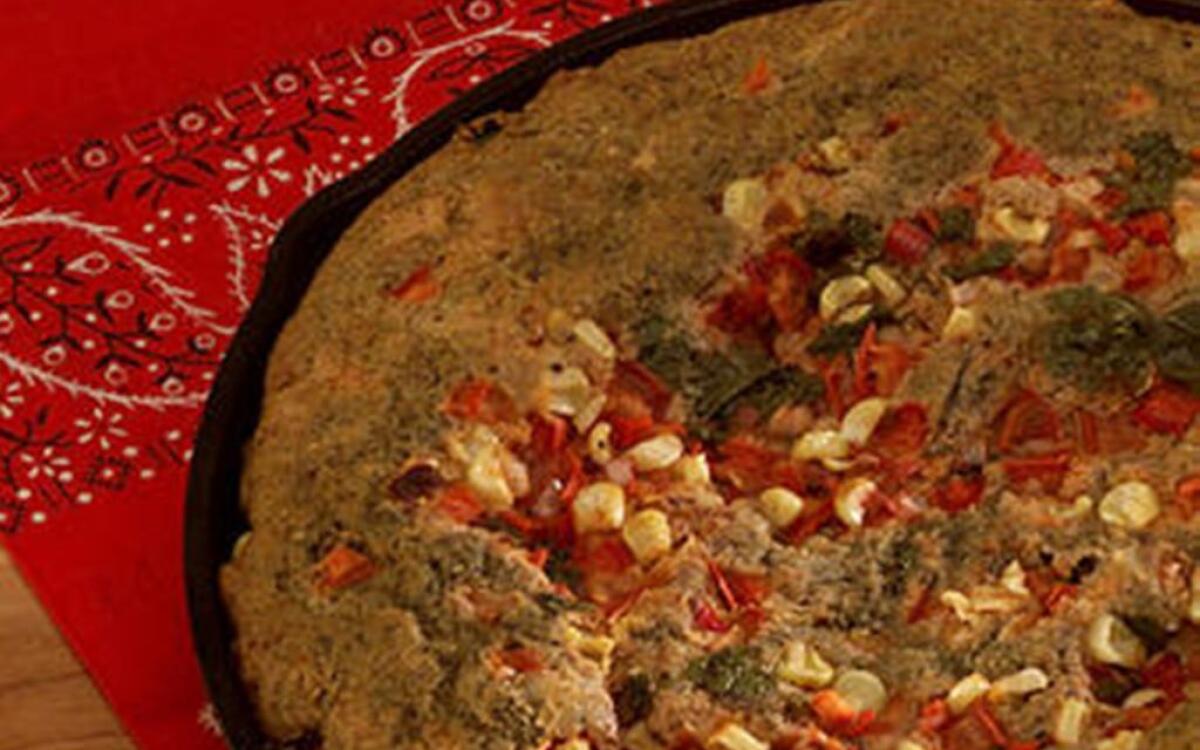
- Share via
Corn bread -- I can’t live without it.
When I wrote a book on bread years ago, I put in all the corn breads I baked at that time. The dozen or so recipes included a plain Texas corn bread to serve with pinto beans, a corn and cheese bread baked in an iron skillet with chile strips on top, a cheese and onion corn bread from Paraguay, several meltingly soft spoon breads from the American South and yeast breads such as New England’s Anadama, which combines cornmeal with wheat flour.
That’s already a good variety, but my repertoire is bigger now, because this rustic American classic inspires chefs to experiment, and I keep making new discoveries -- three already this year.
The first turned up at Brothers Restaurant at Mattei’s Tavern in Los Olivos. Although dinner at this historic stagecoach stop was very good, the bread plate -- especially the jalapeno corn bread -- outshone everything else. Brothers Matt and Jeff Nichols brought the recipe to Mattei’s when they opened there last year. The incredibly light (cake flour’s the secret), sweet corn bread, flecked with green jalapeno and red bell pepper, had been popular at their previous restaurant in Solvang. Matt, who once cooked at the former Spago on Sunset Boulevard, worked out the recipe with input from Spago pastry chef Sherry Yard.
I’d heard raves about Clementine’s “sunshine” corn cakes and called Annie Miler, owner of this Westside bakery-cafe, to get the recipe. “We made about 30 different corn breads and corn muffins until we got the recipe how we wanted it,” says Miler. “Finally we did this one, which has orange segments inside and a thin slice of orange on top, like a little sunburst.”
Miler sprinkles sugar blended with orange zest onto the top to form a sugar crust as the cakes bake. The hearty, citrus-accented breakfast treats make a satisfying alternative to bagels or brioche.
A couple of weeks ago, I dropped into the Newsroom Cafe on Robertson Boulevard for lunch and another corn bread epiphany, this one brought on by a blue corn bread that fairly shouted with zesty flavors and riotous color.
Chef-owner Eddie J. Caraeff bakes his corn bread in 6-inch iron skillets that are sent out as appetizers accompanied by salsas for dipping. Side by side in a little crock on the platter are red salsa quemada (“burnt salsa,” made with roasted tomatoes) and green tomatillo salsa. A dab of deep red chipotle salsa links the two. A fourth salsa, made with corn and chipotles, goes into the batter along with white Cheddar cheese, blue cornmeal and whole-wheat pastry flour. More of the corn mixture decorates the top. (We reworked Caraeff’s recipe for a 10-inch skillet, a more common size.)
Caraeff uses only blue cornmeal, never the yellow. “I think it has a more earthy texture,” he says. “Nutrient-wise, I’ve heard it’s much better.”
The taste difference between blue and yellow is subtle. “If you did a blind tasting, I’m not sure you could tell the difference,” he says. Caraeff would also use rare red cornmeal, if he could get it.
According to Linda Carman, baking expert at Martha White Cornmeal, a company that has co-sponsored the National Corn Bread Festival (www.national cornbread.com) in South Pittsburg, Tenn., for the last seven years, the color of cornmeal is simply determined by the color of the corn it’s made from, and there’s only a slight difference in taste.
“People prefer one or the other, I think, because of the way it looks. It depends on what you’re used to. In the South, we prefer white, but everywhere else, people like yellow.” Carman says there are variations in the granulation of cornmeal that can be significant in terms of recipe preparation, again with regional preferences such as for a very fine, almost flourlike granulation in Georgia. But widely available cornmeals will be of a medium granulation, and recipes calling for other textures will so specify.
Restaurants like the Newsroom and Z’Tejas Southwestern Grill in South Coast Plaza in Costa Mesa serve their corn bread in iron skillets not only for the skillets’ rustic Western charm but also because they keep the bread “at the optimum temperature throughout the entire dining experience,” says Russ Klop of Z’Tejas.
Baking bread in iron pans is an old custom that has caught on again. Home cooks once used spiders, a graphic name for skillets on legs tall enough to stand above the coals in a fireplace. This kept ashes from collecting on the bread. Iron skillets are ideal for rough travel, hold the heat well and last forever. Iron pans from old American firms like Griswold, Wagner and Lodge (founded in 1896 and a co-sponsor of the cornbread festival) are collectibles, with enthusiasts’ clubs.
Last weekend, I whipped out one of my veteran iron skillets just before dinner. Following an old technique, I let shortening melt in the pan in a very hot oven while mixing the batter. The skillet became so hot the batter crusted around the edges the minute I poured it into the pan. Only 20 minutes of baking, and the gorgeous golden loaf was ready to serve. You couldn’t ask for nicer fast food than that.
Chipotle corn salsa
Stir together the corn, tomato, onion, bell pepper, serrano chile, chipotle chile, lime juice, oil, cilantro, salt and pepper in a small bowl. (Makes 2 1/4 cups.)
Corn bread
Heat the oven to 325 degrees.
Sift together the cornmeal, pastry flour, sugar, baking powder, baking soda and salt into a large bowl.
In another bowl, combine the beaten eggs, buttermilk and melted butter. Add to the dry ingredients and stir to combine, being careful not to over-mix. Then add the cheese and half the salsa, stirring to blend.
Pour into a 10-inch cast iron skillet and top with the remaining salsa. Bake until a toothpick inserted in the middle comes out dry, 30 to 35 minutes.
Get our Cooking newsletter.
Your roundup of inspiring recipes and kitchen tricks.
You may occasionally receive promotional content from the Los Angeles Times.










